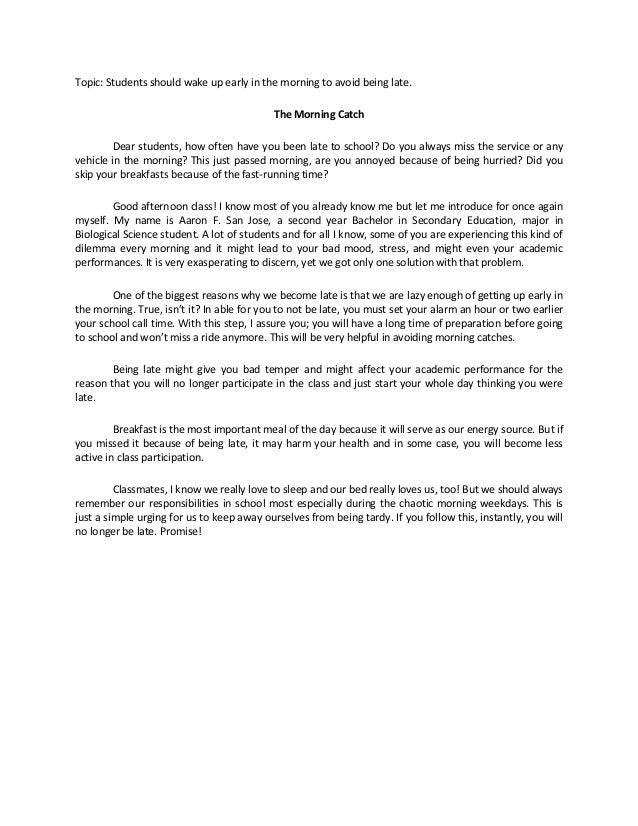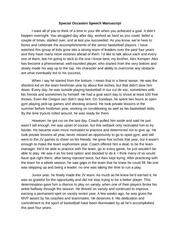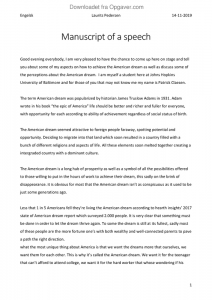
With practice, a speaker can achieve a conversational tone and give the impression of speaking extemporaneously and maintaining eye contact while using an autocue device.
#Manuscript speech examples professional#
It is worth noting that professional speakers, actors, news reporters, and politicians often read from an autocue device, such as a TelePrompTer, especially when appearing on television, where eye contact with the camera is crucial. For this kind of “straight” manuscript speech to hold audience attention, the audience must be already interested in the message and speaker before the delivery begins. Keeping one’s eyes glued to the script prevents eye contact with the audience. Unless the speaker has rehearsed the reading as a complete performance animated with vocal expression and gestures (well-known authors often do this for book readings), the presentation tends to be dull. First, it’s typically an uninteresting way to present. However, there are costs involved in manuscript speaking. A manuscript speech may also be appropriate at a more formal affair (like a funeral), when your speech must be said exactly as written in order to convey the proper emotion or decorum the situation deserves. In reading one word at a time, in order, the only errors would typically be mispronunciation of a word or stumbling over complex sentence structure. For example, reading a statement about your organization’s legal responsibilities to customers may require that the original words be exact. In some circumstances this can be extremely important. The advantage to reading from a manuscript is the exact repetition of original words.

In a manuscript speech, the speaker maintains his or her attention on the printed page except when using visual aids. Manuscript speaking is the word-for-word iteration of a written message. Impromptu speeches are generally most successful when they are brief and focus on a single point. If in front of an audience, don’t keep talking as you move back to your seat.


The disadvantage is that the speaker is given little or no time to contemplate the central theme of his or her message. The advantage of this kind of speaking is that it’s spontaneous and responsive in an animated group context. Even worse, you might find yourself going into a meeting and your boss says, “I want you to talk about the last stage of the project. Self-introductions in group settings are examples of impromptu speaking: “Hi, my name is Steve, and I’m a volunteer with the Homes for the Brave program.” Another example of impromptu speaking occurs when you answer a question such as, “What did you think of the movie?” Your response has not been preplanned, and you are constructing your arguments and points as you speak.

You have probably done impromptu speaking many times in informal, conversational settings. Impromptu speaking is the presentation of a short message without advance preparation. Each has its own strengths and weaknesses, but you will most likely want to focus on the extemporaneous approach, since that is probably what your instructor will want from you. 3.2 Methods of Speech Delivery What follows are four methods of delivery that can help you balance between too much and too little formality when giving a speech.


 0 kommentar(er)
0 kommentar(er)
